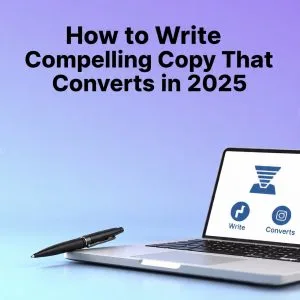Introduction: The AI Pen Has Arrived
The digital landscape is undergoing a seismic shift. Artificial Intelligence, once a concept of science fiction, is now a powerful tool on the screens of marketers, writers, and creators worldwide. From generating blog post ideas to drafting full articles, AI content creation tools are revolutionizing how we produce written material. But this rapid advancement sparks a crucial debate: Is AI a faithful friend that enhances our capabilities, or a formidable foe poised to replace human creativity? The answer, as often is the case, is not black and white.
The Ally: AI as a Powerful Friend to Content Creators
When viewed as a collaborative tool, AI offers unprecedented advantages that can elevate content strategies and free up human talent for higher-level tasks.
- Unmatched Efficiency and Scalability: AI’s most significant friend-like quality is its ability to break through creative bottlenecks and produce content at an incredible scale. It can generate outlines, draft product descriptions, reformat content for different platforms, and summarize lengthy reports in seconds. This allows human teams to focus on more complex and strategic projects.
- A Data-Driven SEO Powerhouse: Modern AI tools are integrated with powerful SEO capabilities. They can analyze top-ranking content for a keyword, suggest semantically related terms to include, recommend optimal heading structures, and ensure content is aligned with search intent. This data-driven approach helps create content that is discoverable and competitive from the outset.
- The Ultimate Ideation and Research Assistant: Beating writer’s block is easier with AI. Creators can use it to brainstorm headlines, generate angles for a topic, create content calendars, and even ask for statistical insights or historical context. It acts as a tireless research partner, compiling information quickly.
- Ensuring Consistency and Tone: For brands, maintaining a consistent voice across all content is vital. AI can be trained on a brand’s existing content to mimic its style, tone, and terminology, ensuring that everything from social media posts to white papers feels cohesively “on-brand.”
The Adversary: AI’s Limitations and Potential Threats
Despite its strengths, AI is not without its flaws. Treating it as a complete replacement for human creators reveals its darker, “foe-like” aspects.
- The Authenticity and “Soul” Deficit: AI generates text based on patterns in existing data. It lacks personal experience, emotion, and genuine empathy. This often results in content that is technically correct but feels generic, sterile, and devoid of the unique voice, storytelling, and nuanced perspective that audiences connect with. It can inform, but it struggles to inspire.
- The Accuracy and “Hallucination” Problem: AI models can generate plausible-sounding but entirely incorrect or fabricated information—a phenomenon known as “hallucination.” Without rigorous human fact-checking, this poses a significant risk to a brand’s credibility and trustworthiness.
- The SEO Over-optimization Trap: While great for SEO, over-reliance on AI can lead to stale, keyword-stuffed content written for algorithms rather than humans. Search engines like Google prioritize helpful, reliable, and people-first content (EEAT – Experience, Expertise, Authoritativeness, Trustworthiness). Purely AI-generated content that lacks depth and originality may eventually be penalized.
- Ethical and Originality Concerns: The question of originality looms large. Since AI trains on vast amounts of human-created content, its output is ultimately a remix of existing work. This raises complex questions about intellectual property, plagiarism, and the potential to homogenize the internet’s content ecosystem.
The Verdict: Neither Friend Nor Foe, But a Tool
The dichotomy of “friend or foe” is misleading. AI is neither. It is a tool, and its impact depends entirely on the hands that wield it.
- AI is a foe when used irresponsibly: to mass-produce low-quality, unverified content without human oversight, with the sole goal of gaming search algorithms.
- AI is a friend when used intelligently: to augment human creativity, handle repetitive tasks, enhance research, and improve SEO, while the human remains firmly in the driver’s seat—editing, refining, fact-checking, and injecting originality, emotion, and strategic insight.
The Future is Collaborative: The Human-AI Partnership
The most successful content strategies of the future will not be purely human or purely artificial. They will be symbiotic. The ideal workflow looks like this:
- Human Strategy: The human defines the goal, audience, and core message.
- AI Leverage: AI is used for brainstorming, outlining, drafting, and SEO optimization.
- Human Mastery: The human editor rewrites, adds unique anecdotes and expertise, injects brand voice, ensures accuracy, and makes the content truly valuable and engaging.
This partnership combines the best of both worlds: the speed and data-processing of AI with the creativity, critical thinking, and emotional intelligence of a human.
Conclusion
The role of AI in content creation is not that of a usurper but an amplifier. It is a powerful friend that can handle the heavy lifting, but a dangerous foe if left unchecked. The true value lies in the collaboration. By embracing AI as a tool to enhance—not replace—human skill, creators and brands can achieve new levels of efficiency, scale, and strategic depth, all while preserving the authentic, trustworthy, and compelling content that truly resonates with people. The pen is mightier than the sword, but the most powerful instrument is the human hand that guides it.






